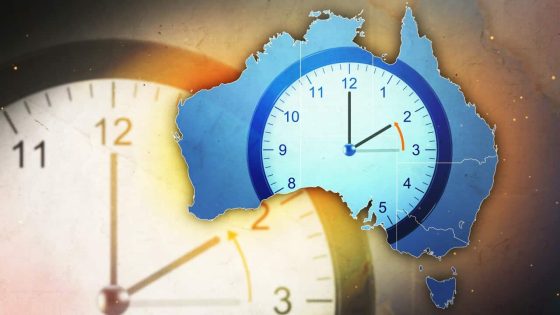Daylight saving will end on Sunday, 7 April bringing with it shorter days and longer evenings.
That means some parts of Australia will move their clocks back an hour.
Here’s everything you need to know about daylight saving and how it affects you.
Where is daylight saving observed in Australia?
Daylight saving time is the practice of advancing clocks by one hour to maximise the longer daylight during the summer months, meaning that the sun sets at a later clock time.
Daylight saving is observed in NSW, Victoria, South Australia, Tasmania, the ACT and Norfolk Island.
Daylight saving is not observed in Queensland, the Northern Territory, Western Australia, Christmas Island and the Cocos (Keeling) Islands.
Victoria, NSW, South Australia and the ACT have all observed daylight saving since the early 70s, and Tasmania slightly longer.
When does daylight saving time end and do clocks go forwards or backwards?
This coming Sunday, 7 April.
The clocks will go backwards in the states and territories that observe daylight saving.
Essentially, the hour between 2am and 3am will repeat itself, adding an extra hour to the day — and an extra hour of sleep.
The clocks going backwards also means that Australia will effectively lose two of its five time zones.
From 7 April, Queensland, NSW, the ACT, Victoria and Tasmania will be on Australian Eastern Standard Time (AEST).
The Northern Territory, South Australia and the town of Broken Hill in NSW will be on Australian Central Standard Time (ACST), which will be half an hour behind AEST.
Western Australia is on Australian Western Standard Time, which will be 1.5 hours behind ACST and two hours behind AEST.
After daylight saving ends, Australia effectively loses two of its time zones.
What is the history of daylight saving?
British-born New Zealand entomologist George Hudson, who wanted more time to collect insects in the evening, is widely credited with conceiving the idea of daylight saving time.
However, it wasn’t until the start of World War One that it began to be adopted.
Germany became the first country to observe daylight saving on 1 May 1916, hoping it would conserve power during the war.
Later that year, Tasmania became the first jurisdiction in Australia to introduce daylight saving for the same reason.
The rest of the country followed a year later before scrapping it in 1918.
Daylight saving was temporarily reintroduced across Australia during World War Two — between 1942 and 1944.
It was brought in again in Tasmania in 1967, with Victoria, NSW, South Australia, the ACT, and Queensland following in 1971. However, Queensland abandoned it in 1972.
Do Australians support daylight saving?
Daylight saving has garnered some controversy, with some studies claiming it
Other studies have shown that daylight savings can have positive
Western Australia and Queensland have trialled daylight saving and held referendums on the issue — in 2009 and 2022, respectively — with both states .
However, those attitudes appear to be changing.
A recent survey found that 80 per cent of respondents supported daylight saving, with more than 60 per cent of each state’s population voting in favour of adopting daylight saving.
Australians who resided further south and tended to work indoors were most in favour of daylight saving, while those who resided further north and worked outdoors tended to be less supportive.
The survey was conducted by Thomas Siegler, an associate professor in human geography at the University of Queensland, and
A recent survey found overwhelming support for daylight saving across Australia.
When will daylight saving start again?
Daylight saving will start again on 6 October at 2am.
At that time, clocks are to be set forward an hour in the states and territories where daylight saving time is observed.





